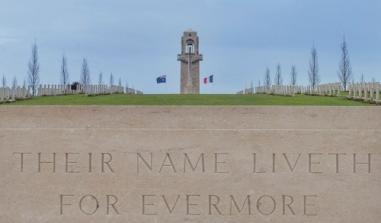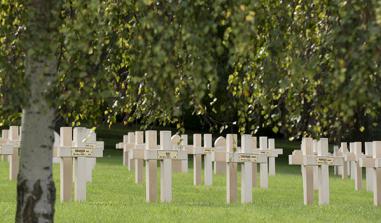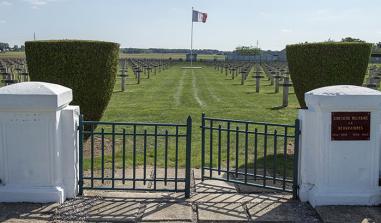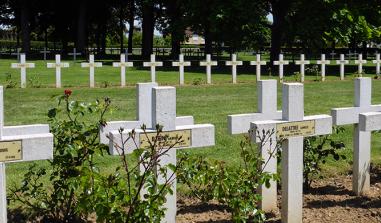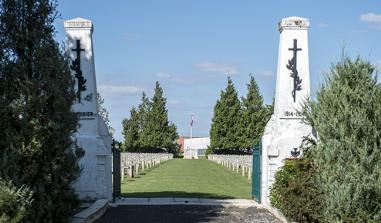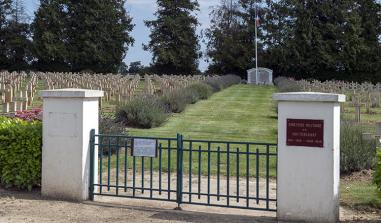Saint Pierre National Cemetery, Amiens
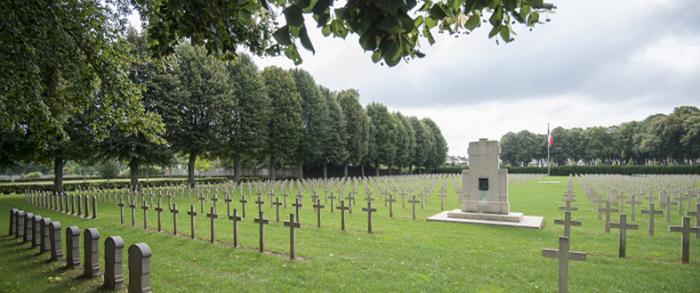
Saint Pierre National Cemetery, Amiens. © ECPAD
Clic here to view the cemetery’s information panel 
Saint Pierre National Cemetery in Amiens contains the remains of French soldiers killed in the battles of the Somme. Established at the end of the war, the cemetery was laid out between 1921 and 1934 to accommodate bodies exhumed from military and municipal cemeteries in Amiens, Dury and La Madeleine. It contains nearly 1 400 bodies of French servicemen who died as a result of their wounds in field ambulances installed in requisitioned buildings, and those of 25 Belgian soldiers killed in the Great War.
Amiens, a city right behind the front
After receiving the first contingents of the British Expeditionary Force, on 30 August 1914 the city of Amiens was captured by the Germans, who abandoned it after the Marne victory of September 1914. During this short occupation, the local population was treated very severely and suffered heavy requisitioning. Following the German retreat, the city, in French then British hands, remained very exposed to German artillery fire and aerial bombardments for the remainder of the war. In March 1918, this strategic location was bitterly disputed. At a cost of major sacrifices from the British Army and the Australian and New Zealand Army Corps, the pressure from the Germans was finally lifted in August 1918.
The Battles of the Somme, 1914-18
The first engagements on the Somme took place during the “Race to the Sea”, a manoeuvre which saw each of the belligerents attempt to outflank the other to the north. It was a failure: the front became entrenched and the Germans dug themselves in solidly along the Bapaume to Péronne road. From then on, the war in the trenches raged from Beaumont-Hamel to Beuvraignes, heightened by tunnel warfare. In July 1915, the British forces took over control of this sector from the French, whose 10th Army was assigned to the defence of Chaulnes to the south, while its 6th Army occupied both banks of the Somme.
In August 1919, the city of Amiens received an army citation, stating that “for four years, it withstood the bombardments and threat of the enemy with unwavering courage and dignity”.
The biggest offensive, carried out primarily by the British, took place in 1916, when General Joffre decided to attack in a “quiet” sector, at the juncture of the French and British armies.
The original plan to batter the enemy was upset by operations in Verdun, which reduced by half the number of French troops assigned to the offensive. The high command therefore decided to conduct a Franco-British operation, supported by strong artillery. General Haig lined up a large number of infantry battalions, all of them inexperienced, with the aim of making a large-scale breakthrough. On 24 June 1916, the artillery preparation got underway, but poor weather conditions meant that the assault was put back to 1 July.
The first days saw heavy losses, and the offensive soon descended into a war of attrition, in which the British, failing to secure any major successes, paid a high price. However, the Germans were forced to withdraw artillery from the Verdun area, so that one of the objectives of the Franco-British operation was achieved.
The progress of the French force, comprised of more experienced units, was more tangible than that of the British and Commonwealth contingents. With fresh reinforcements, the French attempted to develop their actions north of the Somme, but progress fell short of expectations. For ten weeks, the Allied troops chipped away at the German positions, without making a decisive breakthrough. The commanders-in-chief of the Allied armies therefore decided to suspend the overall offensive, but to keep up the pressure on the enemy by launching partial attacks at regular intervals and bringing the first tanks into play. On 18 November 1916, the offensive finally came to an end.
From the map, the Allied troops may appear to have made a dramatic advance, but in fact they moved forward only three miles during the whole battle. The human cost was extremely high. By the end of the offensive, the Germans had lost 650 000 men, the French nearly 200 000. For the British, the Somme remains the biggest military disaster of the 20th century, with the sacrifice of 420 000 men.
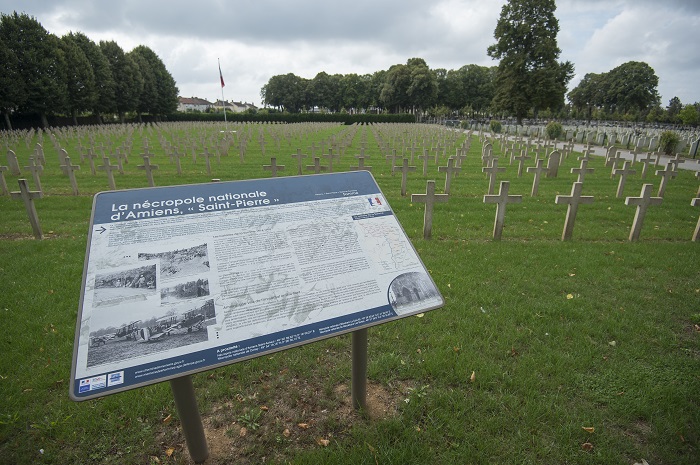
Saint Pierre National Cemetery, Amiens. © ECPAD
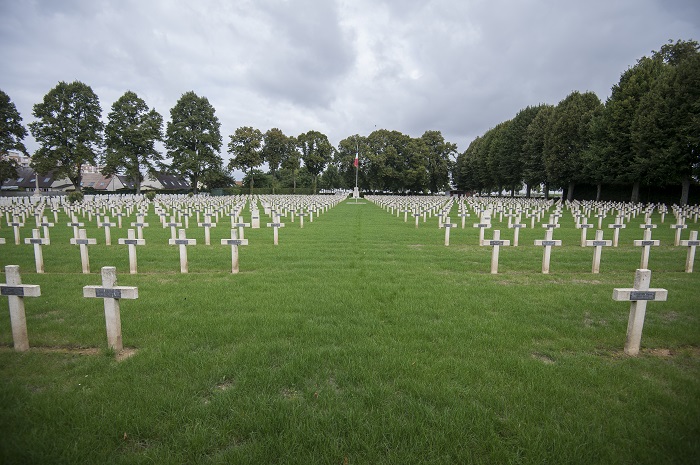
Saint Pierre National Cemetery, Amiens. © ECPAD
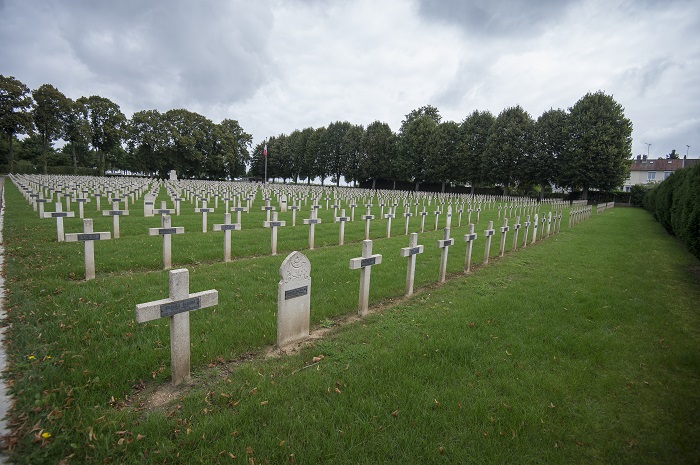
Saint Pierre National Cemetery, Amiens. © ECPAD
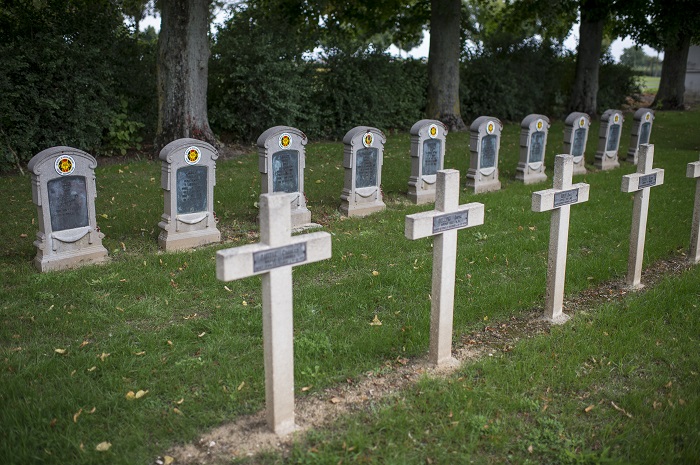
Saint Pierre National Cemetery, Amiens. © ECPAD
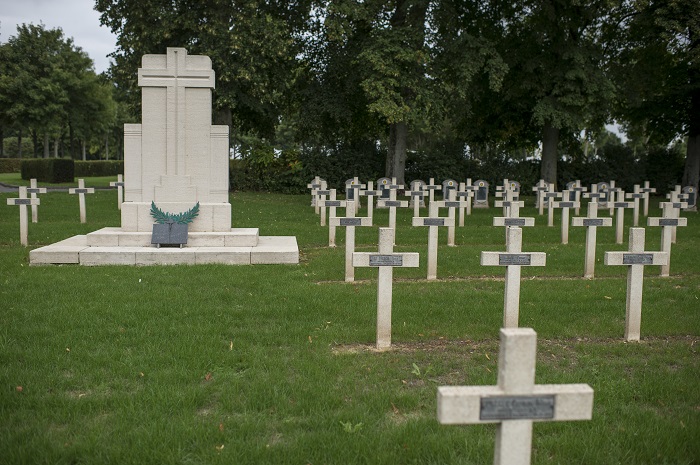
Saint Pierre National Cemetery, Amiens. © ECPAD
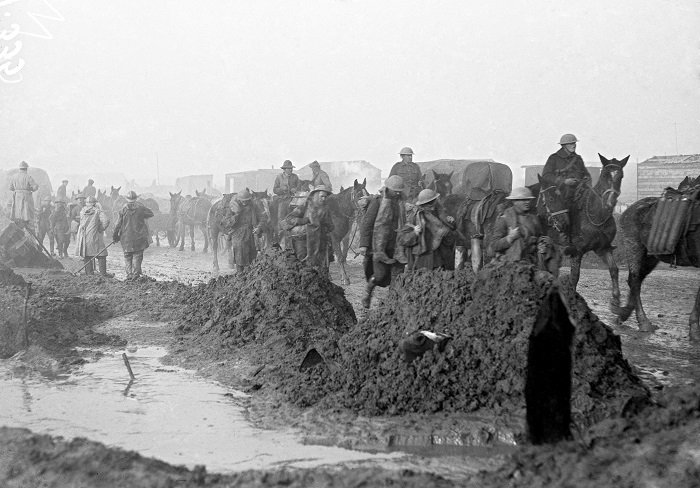
British troops make their way to the front. © ECPAD
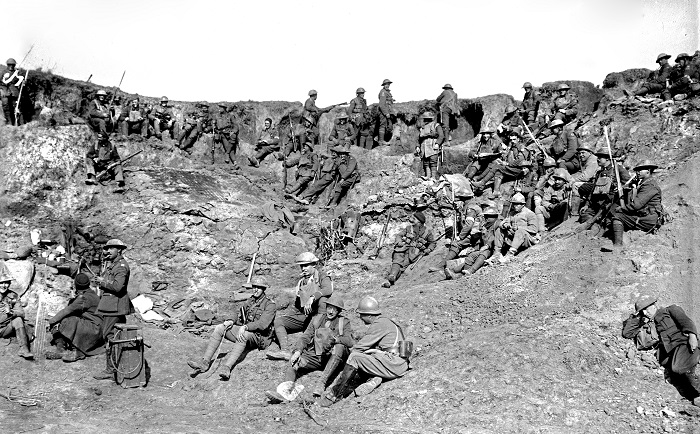
Outside the occupied town of Saint Quentin, in the Somme, French and British troops rest at a hilltop position, May 1917. © ECPAD
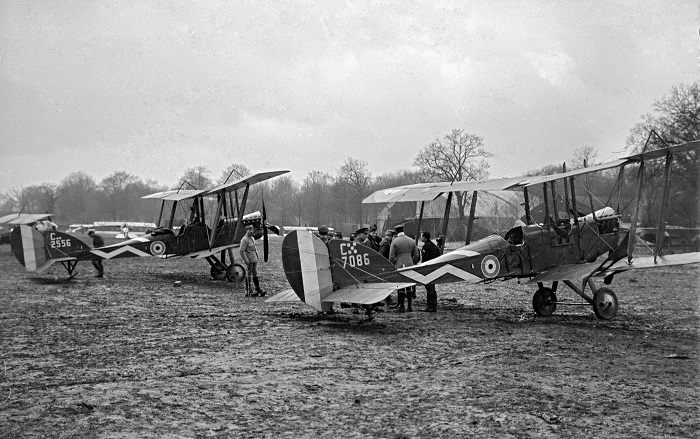
Two B.E.2c two-seater reconnaissance aircraft park at Cachy airfield, near Amiens. This model of biplane was built by the Royal Aircraft Factory. © ECPAD
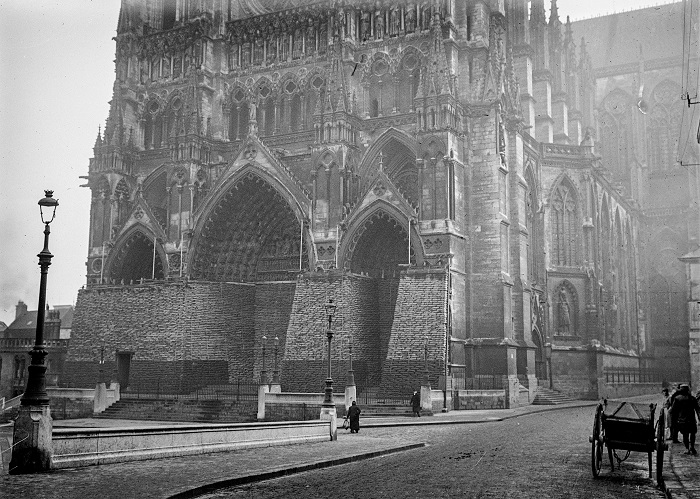
Protection placed over the main door of Amiens cathedral. The work was carried out by sappers, to protect the cathedral’s doors and sculptures. © ECPAD
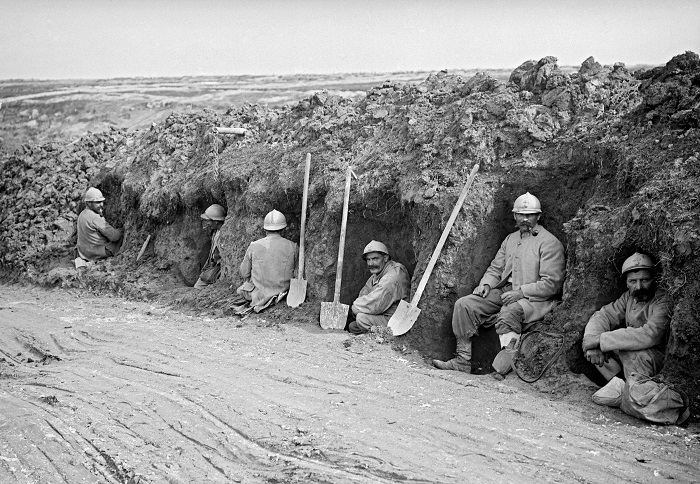
French soldiers take refuge in individual shelters. These recesses served as bomb shelters and were found all along the Hardécourt-aux-Bois to Cléry-sur-Somme road, which was a vital supply route for the front line. The German artillery therefore sought to render it unusable through heavy daily bombardment. The territorials then had to fill each shell hole that was a hindrance to traffic. © ECPAD
Practical information
Amiens
Visites libres toute l’année
Summary
Eléments remarquables
Read more
Read more
Musée Somme 1916 à Albert
Comité départemental du tourisme de la Somme
21, rue Ernest Cauvin - 80000 Amiens
Tél : +33 (0)3 22 71 22 71


